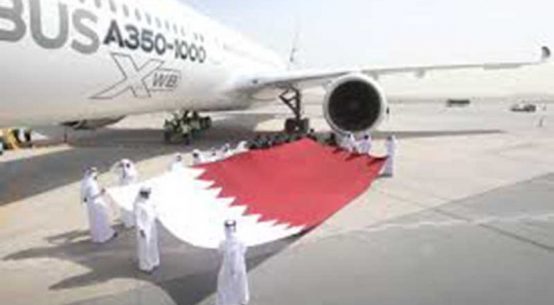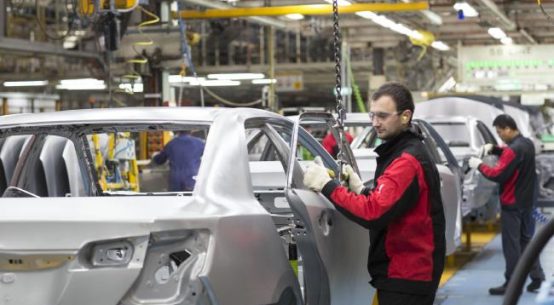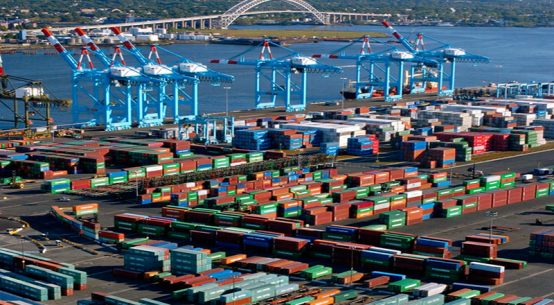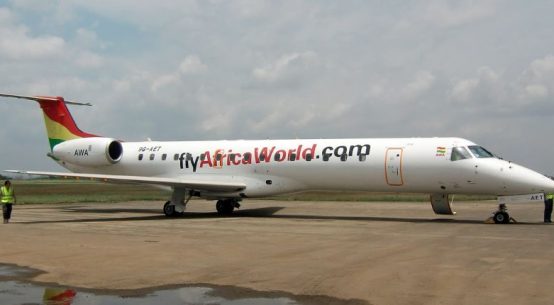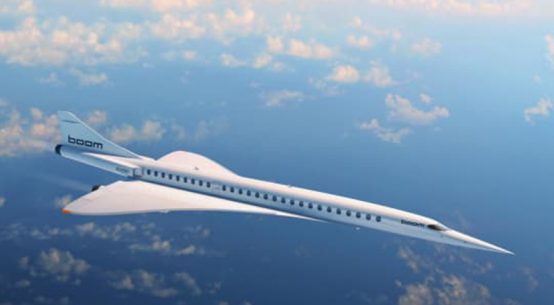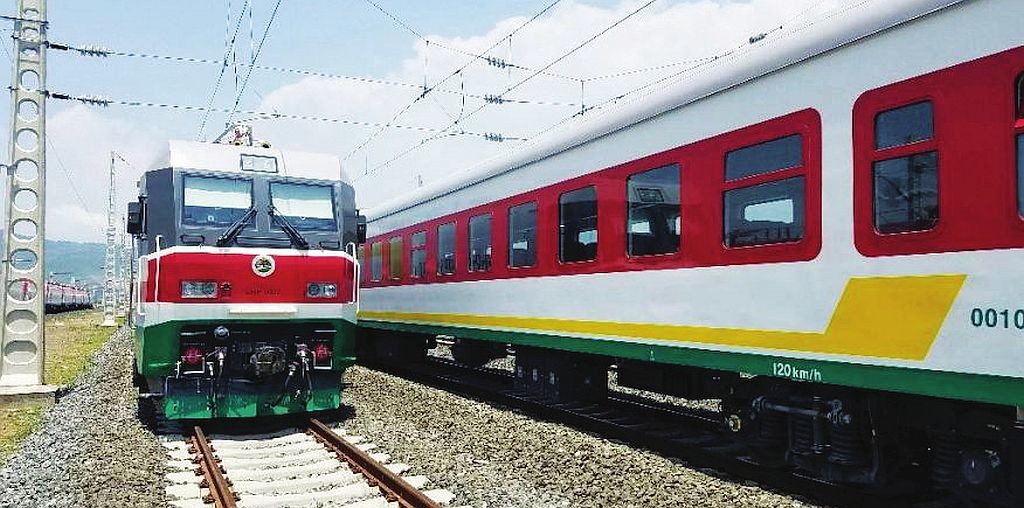
Ethiopia and Djibouti launched their newly built standard-gauge modern electric railway, known as, Ethio-Djibouti Railway. Covering a total of 752-kilometer, it is the first electric railway in Africa, referred to as an ‘umbilical cord’ that intertwined the two nations for more than a century.
Ethiopia has disclosed that its Chinese-built electric rail line will start commercial operations in October this year (2017).
Prime Minister Hailemariam Dessalegn of Ethiopia and President Ismail Omer Gulleh of Djibouti officially inaugurated the railway project, accompanied by Togolese President who was paying an official visit to Ethiopia and by an official envoy of the Chinese President whose nation has extended 70 percent of the total cost.
“It is indeed a historic moment, a pride for our nations and peoples,” said Hailemariam Desalegn, the prime minister of Ethiopia, shortly before the train — the first electric, transnational railway in Africa — headed toward Addis Ababa, the Ethiopian capital. “This line will change the social and economic landscape of our two countries.”
Ahmed Shide, Minister of Ethiopia’s Ministry of Transportation, said the rail project is a showcase of China’s support for Ethiopia’s efforts to transform its economy through infrastructural development.
“We hope the rail project will facilitate the expansion of industrial manufacturing and boost Ethiopia’s competitiveness by significantly cutting the time needed for Ethiopia’s exports to reach Djibouti port,” he added.
China, which designed the system, supplied the trains and imported hundreds of engineers for the six years it took to plan and build the 466-mile line. And the $4 billion cost? Chinese banks provided nearly all the financing.
China is placing more than $14 billion worth of bets here in Djibouti, a geopolitically strategic speck of a country beset by soaring poverty and unemployment. The projects include three ports, two airports and a pipeline that will bring water from Ethiopia, its landlocked neighbor and a regional economic power that depends on Djibouti’s ports for 90 percent of its foreign trade.
The electrified rail line is expected to cut transportation time needed for goods to reach Djibouti port from the Ethiopian hinterland and vice versa from at least two days to 10 hours.
The rail line will also provide a passenger service, with an average speed of 120 km per hour and a single coach holding 118 passengers at a time.
The first 320 km of the rail project from Sebeta to Mieso was carried out by China Rail Engineering Corporation while the remaining 436 km from Mieso to Djibouti port section was built by China Railway Group.
The two nations have outlaid an aggregate of USD 3.4 billion to finalize the railway infrastructure which is laid on 756km from Addis Ababa to the Port of Djibouti.
History of the rail
The old railway that linked the two neighboring countries was built by France some 119 years ago.
Though it is superseded today, it has left historic legacies for the two nations. The Eastern Ethiopia city, Dire Dawa, located 300km away from the border of Djibouti is one of the prominent living legacies the old railway has left. Created along with the establishment of the old railway line, Dire Dawa has interwoven the Oromos with the Somali nationals of both Ethiopia and Djibouti. This makes Dire Dawa an exception to the current ethnic federalism of Ethiopia. Against the ethnic decentralization, Dire Dawa has been left as a federal city with self-administration autonomy. Dire Dawa was also a city where many Djiboutian boys and girls including the sitting president Ismail Omer Gulleh were raised.
Djibouti had been under the protectorate of France, its former colonizer, up until President Gulleh was first elected in 1999 as a handpicked successor of his uncle, Hassen Gouled. Gouled had been administering his country with a budget slice thrown from France and a military support to safeguard the country’s sovereignty. However, Djibouti’s relationship has deteriorated during the reign of President Guelleh, who is alleged to be involved in the mysterious death of the France Judge Bernard Borrel in Djibouti. This led France to cut its budgetary support leaving the small East African coastal state to struggle with the economic crisis. This difficult time coincided with Ethiopia’s departure from the Port of Massawa following the bloody Ethio-Eritrtea war, which ended in 2000.
Since then, the Port of Djibouti has been serving as the only sea outlet for landlocked Ethiopia. Consequently, the government of Djibouti has been amassing more than 70 percent of its annual revenue from the port which is providing 87 percent of the traffic for Ethiopian imports and exports, according to reports.
Boost economy
Ethiopia’s growing importation of goods, fertilizers and food aids and its growing export at the same time have created congestions at the Port of Djibouti. The congestion is mainly attributed to logistic problems Ethiopia currently is facing.
The rail will transport 500 tons of cargo which is equivalent to carriage capacity of 88 cargo trucks, according to the Ethiopian Railway Corporation (ERC) and it will reduce the duration of cargos from the earlier three days average time to 10 hours.
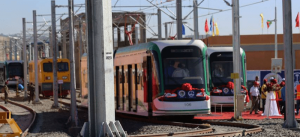
President Guelleh on his part said the economic ties created between Ethiopia and Djibouti through the old rail network will expand beyond port services.
“Economic integration is our destiny,” he further added.
Ethiopia is seeking to have 5,000 km of new lines working across the country by 2020. The electrified and environmentally friendly project will also replace a diesel-powered Addis Ababa-Djibouti line.
Summary
- The 752-km railway links the Ethiopian capital Addis Ababa and the port of Djibouti in the Gulf of Aden country Djibouti. It offers both passenger and freight services.
- The majority of the railway is located in the Horn of Africa country Ethiopia. The rail line runs from plateau as high as 2,400 meters in the west to flat deserts in the east. The big altitude difference was a major technological challenge in its construction.
- The railway is the continent’s first electric railway, which powers the trains through overhead wires. Compared with locomotives that burn diesel, the electric trains boast powerful traction and are more environmentally friendly.
- The railway has a designed speed of 120 km per hour, which may not be impressive to countries that have high-speed rails. But with faster trains come higher costs, both in construction and operation, so experts say the current speed design proves more cost-effective for Ethiopia and Djibouti gave their industrial levels and freight volumes.
- With a total investment of 4 billion U.S. dollars, the line is constructed by China Railway Group and China Civil Engineering Construction Corporation, two state-owned companies of China. It is the first railway built using complete sets of Chinese equipment and standards outside China.
- The railway is also the second trans-national railway built by Chinese firms in Africa, following the Tazara railway, which links Tanzania’s Dar es Salaam with Zambia’s Kapiri Mposhi. During a visit to Ethiopia in May 2013, Chinese Vice Premier Wang Yang hailed the Ethiopia-Djibouti railway as the “Tazara railway in a new era.”
Yet, unlike the Tazara railway, which was built in the 1970s as a foreign aid project by the Chinese government, the Ethiopia-Djibouti railway is a commercial act by Chinese firms.
- Prior to the project, there was no modern railway in Ethiopia or Djibouti. The railway is capable of slashing travel time between Addis Ababa and Djibouti from 7 days on roads to about 10 hours. It also provides landlocked Ethiopia with faster access to the port in Djibouti. There have been expectations for the railway to boost industrialization along its route.
- The railway will be managed by a consortium of Chinese companies for about six years given the lack of railway-related personnel in the two countries. The Chinese management is also commissioned to train local stewards, drivers, and technicians, creating thousands of new jobs and nurturing railway expertise for the two African countries.



